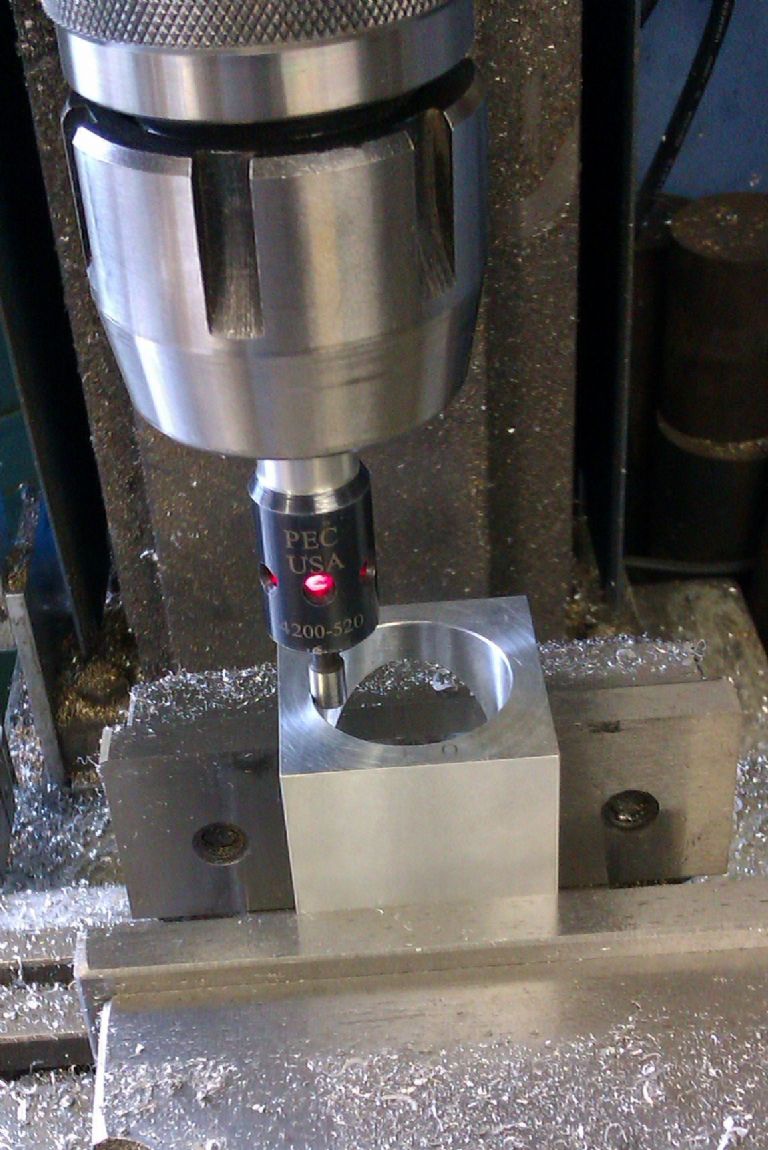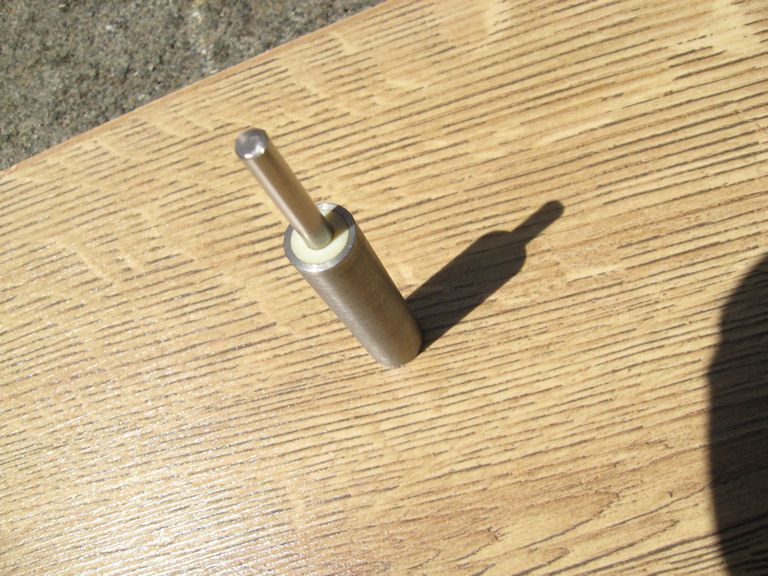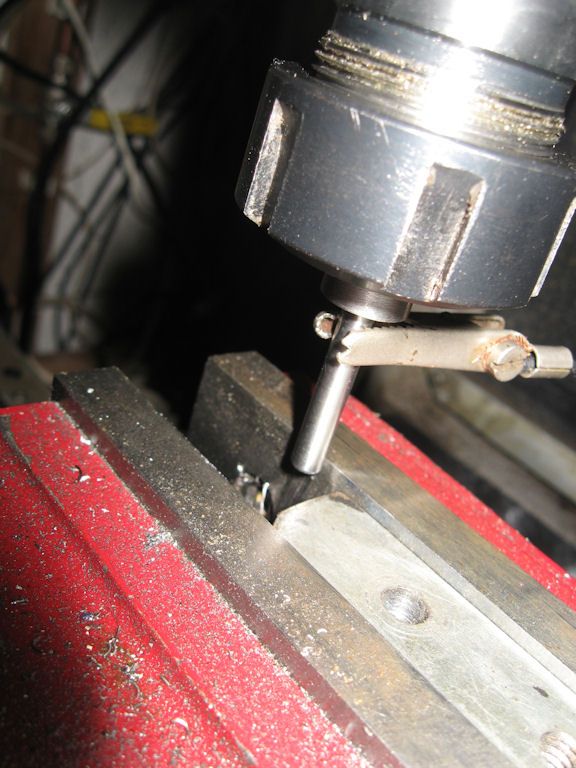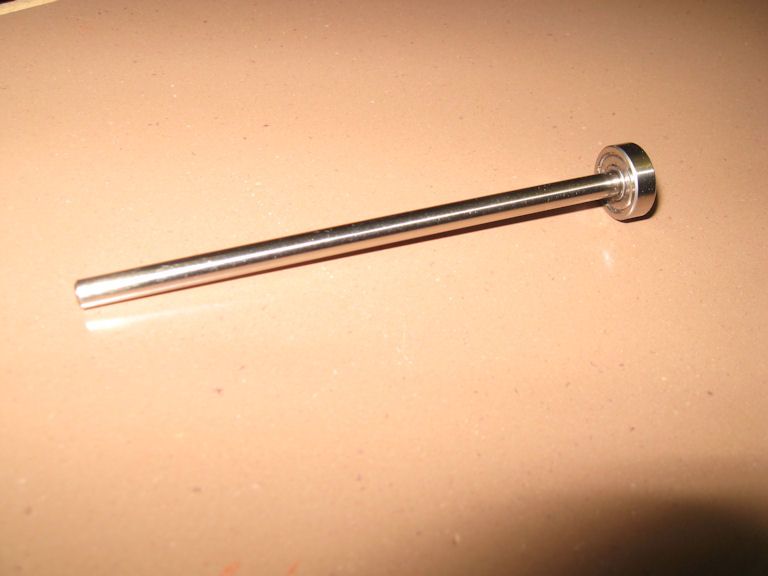there are electronic types available which dont rely on conductivity of the material, but on movement of the contact probe.
In fact, one of the members of MSMEE (melbourne SMEE) has built his own based on his interpretation of a patent found 'on the net'. Cant remember the patent owner right now, but big in measuring tools…
It has 3 pairs of contacts (ball bearings) arranged in a circle (120 deg apart) and a spring loaded disk with contacts which sit between the balls. All is connected in series with a lamp. ANY movement of the probe, which is perpendicular to the disk, breaks the circuit.
he checked it against a 'real' one, with fine results. (he used a commercial probe, as for any edge finder its essential to know the precise dimension of the probe…)
– russ
Just had a thought…as its not 'spinning' when in use, its clearly essential the probe is concentric with its mounting spindle. I dont think that is a consideration with the mechanical 2piece spring loaded one, so it probably requires more care to build…although the last 'how to' article i read on making one suggested that a cylindrical grinder was an essential tool in its construction.)
Edited By russell on 29/06/2012 04:51:42
Sub Mandrel.








